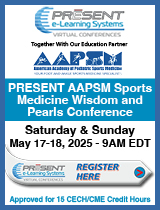I have been following with great interest the
recent thread in PM News regarding topical
compounded medication. There seemed to be
several misconceptions regarding true topical
compounding.
True topical compounding, from my perspective,
utilizes individual combinations of recognized
agents for the treatment of pain, neuropathy, or
dermatologic conditions. The mere fact that a
company produces a pre-made "pain cream" as has
been discussed in these threads is not my
understanding of compounded medications.
If we look at the patient over the age of 65,
this is a population most prone to adverse
reaction from NSAIDs when administered orally.
The average patient over the age of 65 is taking
6 medications, both OTC and prescribed. Many are
also taking aspirin. There are patients that we
see daily who have diabetes, or other problems
with renal function that can be exacerbated with
oral NSAIDs.
Similarly, consumers on anticoagulant therapy,
or those patients that have a history of
gastrointestinal pathology, are at much greater
risk for rather significant adverse reaction to
oral NSAIDS. I find the use of compounded
medication extremely helpful for these patients
enabling me to provide pain relief with the use
of a topical anti-inflammatory combined with
analgesics, muscle relaxants or whatever else I
determined would be an appropriate combination
of medications surrogate patient by providing
pain relief.
There is simply no shortage of literature to
support the efficacy topical compounded
medications when compared to the same
medications administered orally, particularly
NSAIDs. Not only is there equal efficacy, but
the safety is greater utilizing NSAIDs topically
rather than by mouth.
Additionally, many patients are deprived than
benefit NSAIDs or analgesics because the
podiatric physician is concerned about potential
drug interactions. Utilizing topical compounded
medications, these concerns are minimized.
There are many patients who suffered from
paresthesia and dysesthesia secondary to
neuropathy. Often, these patients are denied the
benefit of pain relief due to adverse sequela
drugs such as gabapentin, pregabalin, an similar
agents utilized to treat neuropathy pain.
The ability of topically applied NSAIDs to
provide effective pain relief for osteoarthritis
with similar efficacy and fewer side-effects
than oral NSAIDs was most recently published in
the journal Evidence-based Medicine,Oster. A.,
Watson, P.A. the use of topical NSAIDS in the
elderly patient was recently reviewed by
Arnstein, P.M., in the journal Drugs and Aging,
29 (7) 2012.
the effectiveness of topical therapy for the
treatment of neuropathy pain has been reviewed
in numerous publications and are readily
available to anyone interested in researching
these publications.
Dr. Sullivan has asked for
specific "formulations for the treatment of
various pathology. I would suggest that Dr.
Sullivan either read further on this subject, or
attend an educational session or two regarding
these matters. The components of a topical
compounded medication formulated by the
podiatric physician, is dependent upon the goals
that podiatric physician wishes to accomplish.
Allen Jacobs, DPM, St. Louis, MO,
allenthepod@sbcglobal.net







